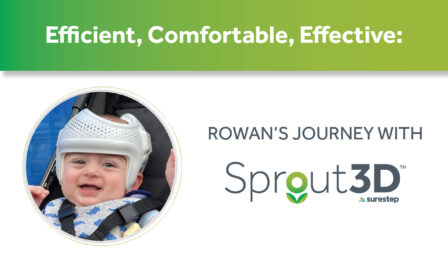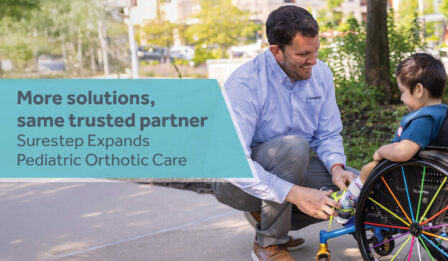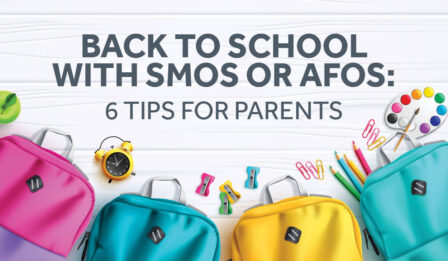6 Tips for Winter Weather in SMOs or AFOs
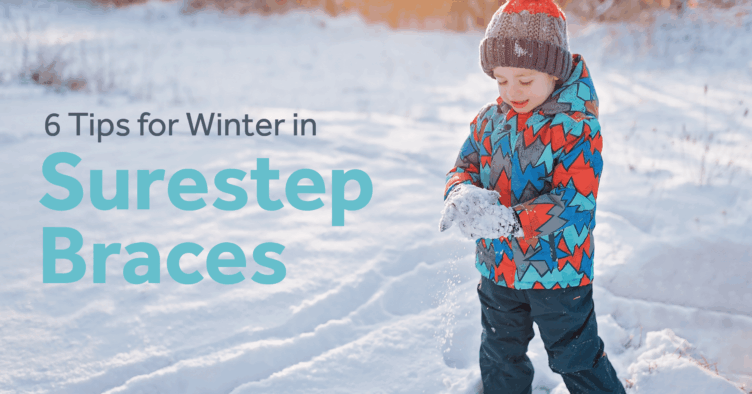
Hello, moms and dads! Are you enjoying some cold, wet weather? Your kids might be begging to play in the snow, participate in winter sports, and get their socks, shoes, and everything else wet. That type of thing is going to happen, so we want to help you understand how to deal with winter issues. Topics include:
- Picking Winter Boots
- Keeping Kids Warm
- Winter Play
- Indoor Sanity
- Drying Socks and Braces
- Seasonal Transitions
The more your child participates in life’s activities, the more they get to practice developmental skills. They can make plenty of progress in the winter, whether indoors or outdoors, so check out our orthotists’ tips* below for ideas.
1. Picking out Brace-Compatible Boots for Snow or Rain
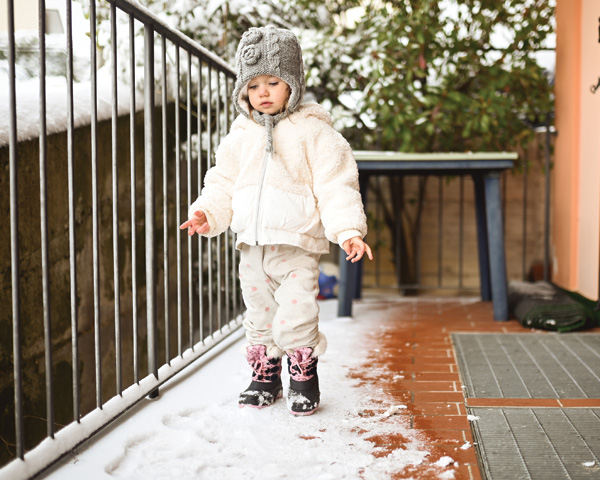
Can snow boots or rain boots fit around SMOs, AFOs, and other braces? Yes, although there are some challenges. A few tips:
Do:
- Feel the relative weights of a few boot options. Your kiddo will appreciate a lighter boot, if the quality is good.
- Check the return policy. You’ll need your money back if a boot doesn’t work out—especially shopping online.
Don’t:
- Get a much larger size than your child normally wears. Big boots lead to trips and falls.
- Give up. Most boots are just not designed for the extra bulk of a plastic brace, but you’ll find some eventually. Keep looking!
Here some vital boot features to look for to find a pair that fits:
- Boots that are extra wide and deep. This allows space for a Surestep brace.
- A front panel that unzips or folds down—or a zipper that opens on the side. This may allow the foot and brace to slip in before you close the panel or zip it up.
- A good size chart when shopping online. Compare the sizes to shoes or boots you already have that fit your child’s feet and braces.
Try boots on your kiddo in a store when possible. Also, if you find a brand that works well, take advantage of it! Buy multiple pairs, in sizes your child will need soon. Here are a few brands that have been working for other parents (non-sponsored links, which open in a new tab):
- Keen Kids Peek a Boot: These have an extra-wide opening, which could fit over SMOs or AFOs.
- Butler Boot Over Boot: These go on over your child’s shoes to keep the rain out. Some parents love them. They may need to be one or two sizes larger than your child’s shoes, but test them to make sure they’re not a tripping hazard.
- Carter’s Toddler Shoes: This brand has a good variety for boys and girls, including lace-up snow boots and hiking boots.
- Koolway Boots: These are comfortable, warm boots that cover your kiddo’s AFOs while they’re inside in the winter. They’re not for walking outdoors.
If you find a great pair that’s not listed here, post about it on our Facebook or Instagram—or your own account—for other parents like you!
2. Keeping Toasty in the Winter
You’re keeping your little prince or princess warm in general. But does the plastic in SMOs or AFOs make your kiddo colder in the winter? Sometimes. So, here are a few tips for dealing with braces in the cold:
- Make sure your child is bundled up in layers, when needed.
- Put them in quality socks that separate their skin from plastic braces.
- A warm hat helps keep more heat in their body. Heat rises!
- Don’t put them in thick or plushie socks. These can change the fit and function of braces. That could slow down your child’s developmental progress.
- Don’t let them go outdoors in their braces without shoes on.
Ordinary socks can work great. But check out Surestep socks, if you’re interested. They are made with moisture-wicking material, and they’re seamless for greater comfort.
3. Playing in a Winter Wonderland
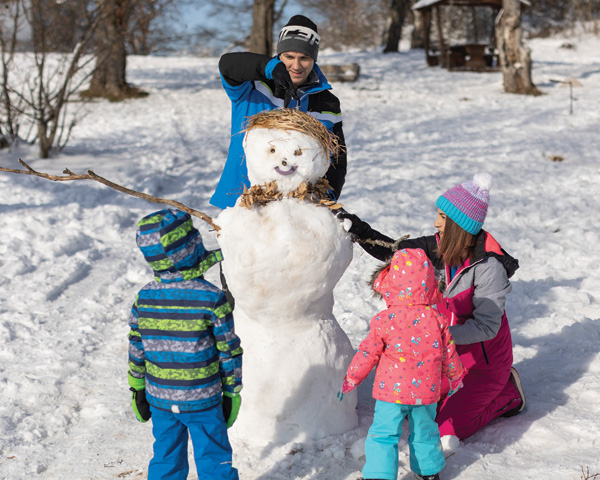
Surestep orthotists encourage kiddos to participate! We love to see them playing with their peers and trying every activity. We support them fitting in with others year-round, when possible. A variety of activities help their mental and physical development.
Playing in the Snow
We encourage you to let them play in the snow. Just find good shoes or boots that will keep them warm and safe. Will SMOs or AFOs be damaged from getting wet? No, they’ll be fine! In the summer, they can get wet in splash pads or the pool. In the winter, they can get wet in the snow or in rain puddles. You can clean them afterwards, if needed. If they get into a snowball fight, just make sure they have warm clothes and good footwear.
Winter Sports
Activities like skating, skiing, and snowboarding are sometimes possible for kiddos with SMOs, AFOs, or other braces. But not always. You should let your kiddo know that they can try a lot of different things and see which ones works out.
- Skating: Skates are built very narrow. You probably won’t find any that accommodate braces. If your child will skate only rarely, it’s okay to skate without braces—as long as the skates give good support for the feet and ankles.
- Skiing and Snowboarding: Your kiddo might be able to find boots for skiing or snowboarding that fit around braces. But they might need to be a size larger than their shoe size.
Again, depending on diagnoses, these activities might not be possible for them. Everyone is different, but you may be able to try a few sports and find an attainable, engaging one.
4. Staying Safe (and Sane) Indoors in the Winter
Surestep braces are slippery if worn without shoes, which is a safety concern. But it’s SO tempting to take shoes off indoors, where kiddos spend more time in the winter! Here are a few ways to help:
- Safe Footwear: Designate “indoor play shoes,” if possible, that your child should use inside. Socks with grippy soles that go over braces also work. Or you could get them to wear their outdoor shoes or school shoes. This is an important safety issue, because slips and falls cause too many injuries.
- Scheduled Breaks: If your child gets extremely tired of wearing braces at home, schedule a 30-minute break in the middle of the day when they can take them off and do a favorite activity.
- Get the Family Involved: You could ask everyone else in your household to wear indoor shoes or slippers so your child won’t feel alone.
- Find Other Indoor Activities: Some families schedule time in indoor play areas during the winter—even indoor pools for exercise variety.
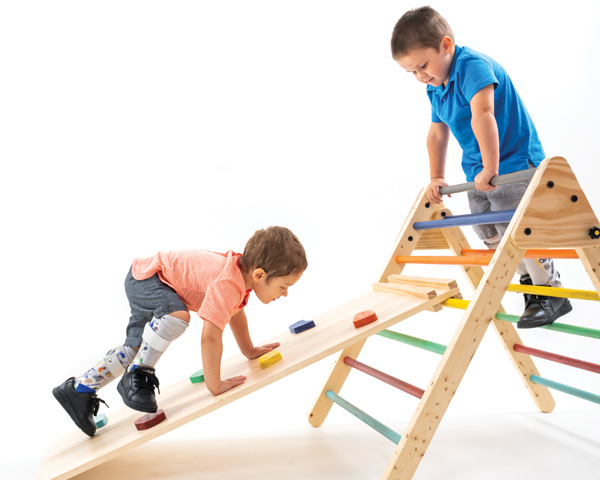
Some people love going barefoot at home. But your child’s development will be much faster and smoother if they keep practicing in their braces. They can make a lot of developmental progress in the winter, if you encourage them and guide them.
5. Drying Socks and Shoes
Just as surely as rain falls, kids splash in it and get their feet wet. But cold, wet socks can chill their bodies, cause skin irritation, and discourage kiddos from wearing their braces. So, to be ready:
- Make sure your kiddo gets a change of socks as soon as possible after theirs get wet.
- Carry extra socks with you when you’re with your child.
- Send at least one extra pair of socks with them to school.
SMOs or AFOs are easy to dry, if they just get some rain on them. But if they get dirt in them, use the cleaning tips in our summer blog post.
6. Enjoying the Magic of Winter
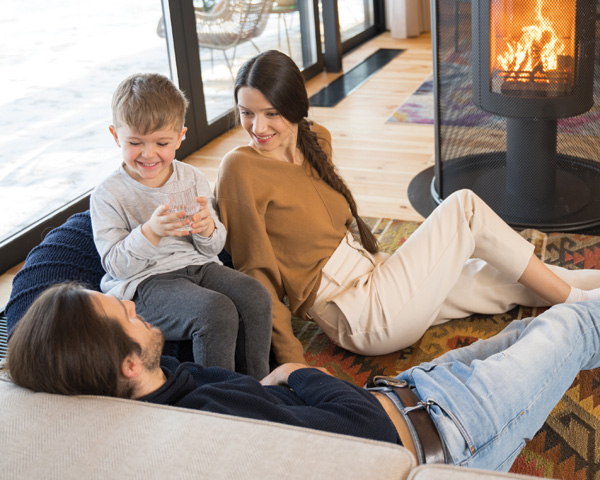
Show your child that transitioning between seasons is fun! Help them find fun activities they can only enjoy in the winter. Also, you could get them different colors of socks for each season, such as pink, green, red, or patterned. Remember, it’s crucial to find shoes or boots that fit their braces well, helping your kiddo get the developmental benefits of braces. Poorly fitting shoes will slow down their progress. Finally, transitioning to winter is easier than transitioning to summer. Bundle up in layers, find good boots, pack extra socks, and you’re good to go! As a parent, you can be a hero, leader, and guide for your child. Build traditions and daily routines for each season that give your kiddo better health, because health is the foundation of lasting happiness.
* Check with your own orthotist for any care instructions for the orthotics they have supplied. This post includes information based on our own experiences with patients but is not personalized medical advice.

